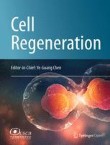Cell Regeneration is the official journal of the Chinese Society for Cell Biology
WOX11: the founder of plant organ regeneration
De novo organ regeneration is the process in which adventitious roots or shoots regenerate from detached or wounded organs. De novo organ regeneration can occur either in natural conditions, e.g. adventitious roo...

